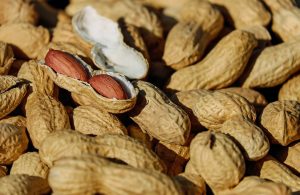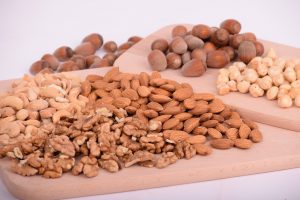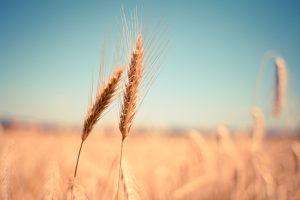11 Food Allergies
Learn
- Food allergies
- Common foods associated with an allergic reaction
- The difference between food sensitivity, food allergy, and food intolerance
Watch this video about food allergies
A food allergy is an immunologically based abnormal reaction to a food. This can be an overreaction to the proteins found in a food item causing symptoms on the body. Food allergy symptoms usually develop within a few minutes to two hours after eating a food to which they are allergic. These symptoms can range from the annoying to the potentially fatal and include:
- Mouth tingling
- Swelling tongue and/or throat
- Difficulty breathing
- Hives
- Stomach cramps
- Diarrhea
- Vomiting
- Drop-in blood pressure
- Loss of consciousness
- Death
There are no clear treatments for food allergies. Epinephrine is sometimes used to control severe reactions, and individuals with known and dangerous allergies may get prescriptions for self-injectable devices. The only certain way to avoid allergic reactions to food is to avoid the foods that cause them. Educating yourself about what is in food means reading food labels carefully or even calling manufacturers for product information. These eight foods cause ninety percent of food allergies:
- Milk
- Eggs
- Peanuts
- Tree nuts
- Fish
- Shellfish
- Wheat
- Soy
It is important to understand and identify what foods contain the protein that causes an allergic reaction, so you can avoid consuming that food. Check out the website below to help identify food allergens.
The 8 Most Common Allergenic Foods:
| Milk | Eggs | Peanuts | Tree nuts |
 |
 |
 |
 |
| Fish | Shellfish | Wheat | Soy |
 |
 |
 |
 |
With a severe allergic reaction, someone may experience anaphylaxis, which is a life-threatening allergic reaction. An EpiPen may deliver epinephrine in an auto-injector to help ease a severe allergic reaction. If someone is wheezing after eating an allergen or has any cause for concern, it is best to administer the shot right away.
Food intolerance
Food intolerances refer to a reaction to food that has nothing to do with the immune system. For example, lactose intolerance occurs when a person doesn’t make any or enough enzyme lactase to break down the milk’s sugar lactose. The inability to break this sugar down causes gas, bloating, and diarrhea. It can be challenging to distinguish food intolerances from food sensitivities, anxiety, or other causes of symptoms. People with lactose intolerance can avoid symptoms by avoiding lactose. Knowing and identifying which products contain lactose requires reading labels and learning what is in the dairy category to avoid it!
| Milk | Cheese | Yogurt |
 |
 |
 |
Food Sensitivities
Food sensitivities are reactions to food that do not cause an allergic reaction and are not an intolerance. Although symptoms can be uncomfortable, they do not cause life-threatening symptoms. There is more research needed to determine which conditions and symptoms may be related to food sensitivities.
Test your Knowledge:
Learning Objectives
- Define a food allergy. (MCCCD Competency 1)
- Explain how people can live with food allergies. (MCCCD Competency 4)
- List the eight common food allergens.(MCCCD Competency 1)
- Discuss the difference between food allergy, intolerance, and food sensitivity. (MCCCD Competency 4)

